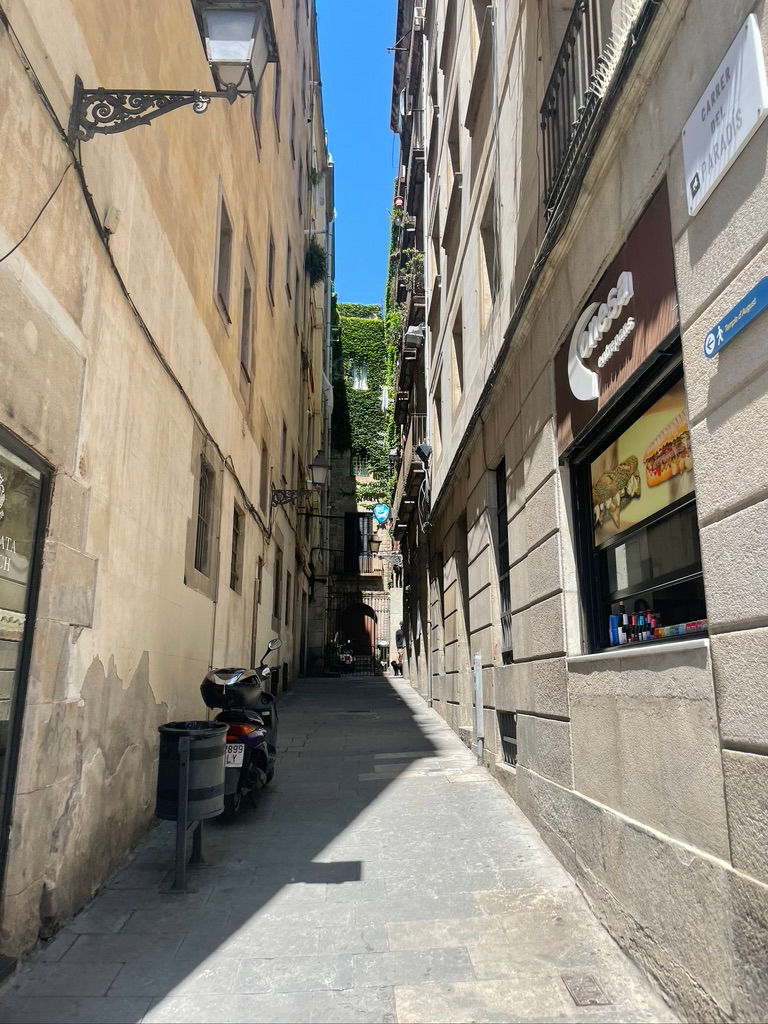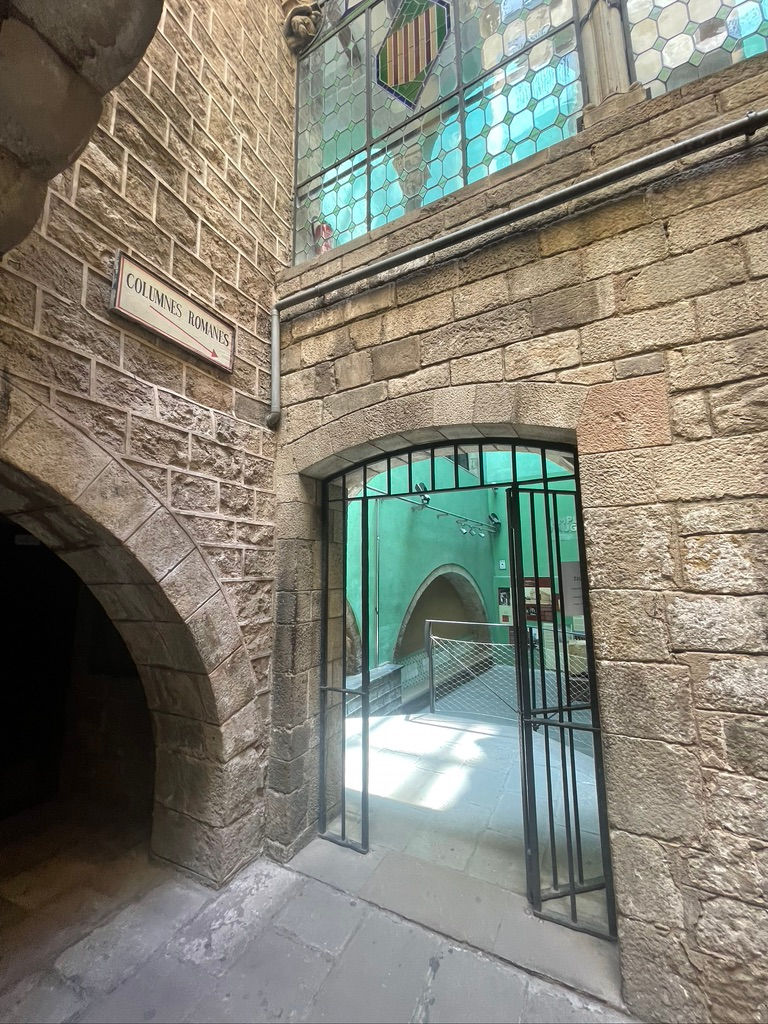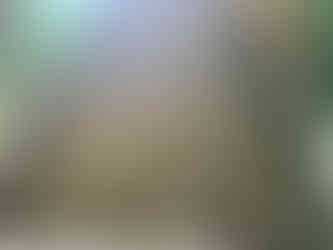A taste of Ancient Rome in Barcelona
- Raquel Lacusky
- May 28, 2022
- 5 min read
Raquel Lacusky
Tucked away in Barcelona's Gothic Quarter lies four original ancient Roman Pillars, connecting the city's present to its past.

Hidden in a courtyard through a small ally way in the Gothic Quarter is one of the most surreal time capsules Barcelona has to offer. Temple Roma D'August is comprised of the remaining four pillars of Temple D'August. The four columns tell the story of the deep-rooted history of what we now know as the modern metropolis that is Barcelona.

A look into Barcelona's past
The Romans founded Barcelona at the end of the first century, calling their newly settled colony Barcino. Roman emperor Augustus sought to create a Romanized province out of the city so that it would function as a satellite of Ancient Rome.
At the heart of Barcino, lay the city's forum. The forum functioned as the city's main square to which the city's political, religious and administrative matters took place.
The forum was conveniently built in the center of the city at an intersection of the two major roads the decumanus maximus and the cardo maximus. The decumanus maximus ran east to west and the cardo maximus ran north to south, making the forum's location both central and accessible.
The forum housed the city's main public buildings, the basilica, the curia (the meeting place of the city's senate) and the temple. In addition, the city archives, market, jail, health deities and springs for water were all located in the forum.
The forum's arcade
The forum's square was surrounded by an arcade, but not the type where one would play video games. In ancient Rome, arcades were spaces in which pedestals and statues were erected to honor a city's important figures. Many of the statues were built by rich public figures who ordered and paid for their monuments to be created themselves.
Historians have uncovered a few of the original pedestals that surrounded Barcino's forum, one of which you can see at Temple D'August.
The honorary pedestal visitors can see at Temple D'August was built to recognize Quintus Calpurnius Flavs. Quintus was born in Barcino in the late first century AD. He came from a long line of Barcino municipal magistrates allowing him to gain recognition as a public figure.


Along with that of Quintus, historians have recovered pedestals from the original Roman arcade that honor leaders of the cult of Augustus. The cult of Augustus was an imperial religious cult that largely dealt with Roman politics. The cult was comprised of elected officials who were separated into two categories: the flamen augustal and the seviri augustales. The distinction between the two groups was that the seviri augustales were former slaves who had elevated their social status through political elections. Their existence began to represent the idea of freedmen in ancient Rome.
The temple's original structure
The temple was built at the end of the first century BC with the founding of Barcino. The temple's originally sat on a podium that stood three meters high. Its eloquent structure allowed it to become the forum's main landmark. This in turn stressed the Roman society's religious duties above that of civil matters.
The fall of the forum
The forum remained the center of Barcino until the city was taken over and partially destroyed by the Franks and Alamanni. They destroyed some of the arcade's famous pedestals and statues, but the Temple remained untouched. Many of the materials left over from the dismantling of the honorary pedestals were then used as materials to build new buildings such as the bishop's place.
Despite the temple remaining intact while the city changed ownership, it lost its function with the arrival of Christianity.
Additionally, the political, religious and administrative happenings of the city no longer happened at its center, but rather in its newly developed northern quarter. The northern quarter had become predominantly Christian, which allowed it to become the city's new center during the new Christian era.
The temple overtime
After the collapse of Barcino, the temple served as a reminder of the city's past.
By the eleventh century, the temple received a new nickname as people began to call it 'the Miraculum' or the miracle. The nickname was earned after the temple's columns managed to remain strong over time.
During the middle ages, many new buildings were built in what used to be Barcino's famous forum. Eventually, houses were built around the columns that preserved the integrity of the columns in a fragmented way.
Throughout and after the fifteenth century, the columns inside the houses drew lots of curiosity from visitors. People speculated what the original origin of the columns could have been including the theories that they were the remains of a monument or the end of an aqueduct.
It wasn't until the mid-nineteenth century that it was proven that the temples belonged to Barcino's ancient Roman temple.
By the late nineteenth century, debates began to occur on the topic of what to do with the original Roman columns. Many believed that the columns should be free-standing to be viewed by the public, while others believed that they should be continued to be preserved in the medieval building that was housing them.
The debate was not settled until 1903 when the Hiking Club of Catalonia bought the building holding the columns and commissioned architect Lluís Doménech i Montaner to build a new home for the precious tokens of ancient Rome. Montaner created the courtyard where the Temple is now housed on Placa del Rei where the columns were moved to be restored just a few decades before.

The temple today
Now Temple D'August is owned by el Museu D'Historia De Barcelona which allows visitors to view the Roman columns for free. Museu D'Historia De Barcelona has worked to preserve many ancient artifacts found around Barcelona and continues to do research studies to acquire as much information as possible on the city's rich history.
Barcelona native Tomas brings groups to Temple D'August on guided tours. He believes the free site should be taken advantage of by all tourists. "Getting to see something like this for no cost is truly a gift. I am very grateful for the work El museum D'Historia De Barcelona has done here. I love bringing people to see this," Tomas said.
Why visit the temple
Temple D'August is a must-see when visiting Barcelona's gothic quarter. It is easy to miss, as it is located down a quiet alley hidden among the Gothic Quarter's busy streets full of restaurants and vendors. If you struggling to find the site, simply ask a local police officer or store owner for help. Locating the ruins feels like unlocking one of Barcelona's best-kept secrets.

Stepping into the courtyard feels something of stepping directly back in time. The columns are somewhat of an ancient time capsule that is enjoyed by all who visit.

Elderly couple Jim and Martha came to Barcelona from South Carolina to celebrate their anniversary. They visited Temple D'August on a guided tour but decided to return to take the time to revel in its glory. "I've never seen anything like this. The way they are standing so perfectly and inside a modern building is incredible," Jim said.
"It's so unique. The history of this city is unbelievable. You can't see stuff like this in the states," Martha said.
So, if you are taking a trip to Barcelona's Gothic Quarter, make sure to make a pit stop in Ancient Rome.











Comments